Text

Head rotor
Maximize fuel distribution and combustion efficiency with our Head Rotors. These parts, which are made with reliability and durability in mind helps in getting the most out of your diesel engine.
#Head rotor#engine parts#common rail test bench#diesel engine parts#pizo valve#delivery valve#test bench#bosch injector#diesel engine parts manufacturer#denso valve#remanufacture injector
0 notes
Text
Driving Innovation: The Evolution of Fuel Pump Test Benches
In the intricate world of automotive engineering, the development of fuel pumps stands as a testament to the marriage of theory and practice. At the heart of this endeavor lie pump testers and fuel pump test bench, sophisticated tools that bridge the gap between theoretical designs and real-world performance.
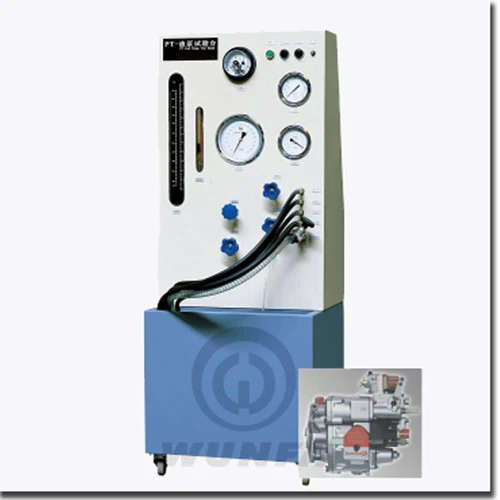
Fuel pump test bench serve as the proving ground for innovative fuel pump designs. These specialized platforms provide engineers with the means to subject fuel pumps to a battery of tests, simulating a wide range of operating conditions and performance parameters. By meticulously analyzing the data gathered from these tests, engineers can fine-tune their designs, optimize performance, and ensure reliability under diverse circumstances.
Pump testers play a pivotal role in this process, serving as the interface between theory and practice. These precision instruments are tasked with evaluating the performance characteristics of fuel pumps, measuring variables such as flow rate, pressure, and efficiency with unparalleled accuracy. By providing real-time feedback on pump performance, pump tester enable engineers to iterate on their designs rapidly, identifying areas for improvement and refining their solutions iteratively.
One of the key advantages of pump tester is their ability to replicate real-world conditions with precision. Whether it's simulating extreme temperatures, varying fuel compositions, or fluctuating demand levels, pump testers can recreate the complex operating environments that fuel pumps encounter on the road. This level of fidelity allows engineers to validate their designs comprehensively, ensuring that they meet the stringent demands of modern automotive applications.

Furthermore, pump testers facilitate collaboration between different stakeholders involved in fuel pump development. From design engineers to quality assurance teams, these testers provide a common platform for communication and evaluation, fostering synergy and streamlining the development process.
In conclusion, pump testers and fuel pump test bench represent the nexus of theory and practice in automotive engineering. By leveraging these advanced tools, engineers can transform conceptual designs into reliable, high-performance fuel pumps that drive innovation and propel the automotive industry forward.
#diesel engine parts#engine parts#common rail test bench#diesel engine parts manufacturer#test bench#denso valve#pizo valve#remanufacture injector#delivery valve#bosch injector#Fuel Pump Test Benches#Test Benches
0 notes
Text
Unlocking Diesel Performance: Exploring the Common Rail Test Bench Frontier
In the realm of diesel engines, where precision and efficiency reign supreme, the role of test bench cannot be overstated. These sophisticated pieces of equipment serve as the backbone of innovation, facilitating the development and optimization of common rail technology. Common rail test bench stand at the intersection of engineering ingenuity and practical application, driving forward the evolution of diesel engines.

At their core, test bench are specialized platforms designed to simulate real-world conditions and evaluate the performance of various engine components. In the context of common rail technology, these test benches play a crucial role in fine-tuning fuel injection systems to maximize efficiency and minimize emissions. By subjecting common rail systems to rigorous testing protocols, engineers can identify potential issues, optimize parameters, and ensure optimal performance under diverse operating conditions.
One of the key advantages ofcommon rail test benchis their ability to replicate a wide range of scenarios, from steady-state cruising to high-speed acceleration, allowing engineers to assess performance across the entire operating envelope. This comprehensive approach enables manufacturers to develop robust and reliable diesel engines that meet the demands of modern transportation while adhering to stringent emissions regulations.
Moreover, common rail test benches serve as invaluable tools for research and development, providing engineers with valuable insights into the intricate dynamics of fuel delivery, combustion, and emissions control. By analyzing the data gathered from test bench experiments, researchers can refine mathematical models, validate simulation results, and drive continuous improvement in common rail technology.

In addition to their role in product development, test benches also play a vital role in quality assurance and troubleshooting. By subjecting every component to rigorous testing before deployment, manufacturers can identify and rectify potential issues early in the production process, minimizing costly recalls and downtime for end-users.
In conclusion, the intersection of test benches and common rail technology represents a nexus of innovation in the diesel industry. These advanced testing platforms enable engineers to push the boundaries of performance, efficiency, and reliability, driving forward the evolution of diesel engines to meet the challenges of tomorrow's transportation landscape.
#diesel engine parts#engine parts#common rail test bench#diesel engine parts manufacturer#test bench#Common rail test bench
0 notes
Text
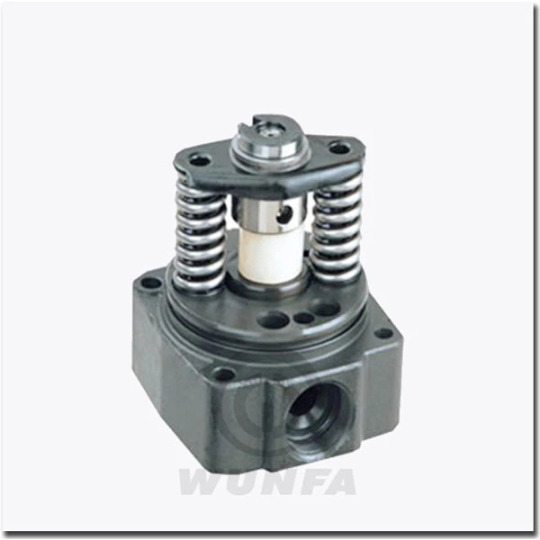
Head rotor
Maximize fuel distribution and combustion efficiency with our Head Rotors. These parts, which are made with reliability and durability in mind helps in getting the most out of your diesel engine.
0 notes
Text
Driving Innovation: The Evolution of Fuel Pump Test Benches
In the intricate world of automotive engineering, the development of fuel pumps stands as a testament to the marriage of theory and practice. At the heart of this endeavor lie pump testers and fuel pump test bench, sophisticated tools that bridge the gap between theoretical designs and real-world performance.

Fuel pump test bench serve as the proving ground for innovative fuel pump designs. These specialized platforms provide engineers with the means to subject fuel pumps to a battery of tests, simulating a wide range of operating conditions and performance parameters. By meticulously analyzing the data gathered from these tests, engineers can fine-tune their designs, optimize performance, and ensure reliability under diverse circumstances.
Pump testers play a pivotal role in this process, serving as the interface between theory and practice. These precision instruments are tasked with evaluating the performance characteristics of fuel pumps, measuring variables such as flow rate, pressure, and efficiency with unparalleled accuracy. By providing real-time feedback on pump performance, pump tester enable engineers to iterate on their designs rapidly, identifying areas for improvement and refining their solutions iteratively.
One of the key advantages of pump tester is their ability to replicate real-world conditions with precision. Whether it's simulating extreme temperatures, varying fuel compositions, or fluctuating demand levels, pump testers can recreate the complex operating environments that fuel pumps encounter on the road. This level of fidelity allows engineers to validate their designs comprehensively, ensuring that they meet the stringent demands of modern automotive applications.

Furthermore, pump testers facilitate collaboration between different stakeholders involved in fuel pump development. From design engineers to quality assurance teams, these testers provide a common platform for communication and evaluation, fostering synergy and streamlining the development process.
In conclusion, pump testers and fuel pump test benches represent the nexus of theory and practice in automotive engineering. By leveraging these advanced tools, engineers can transform conceptual designs into reliable, high-performance fuel pumps that drive innovation and propel the automotive industry forward.
#diesel engine parts#engine parts#denso valve#pizo valve#diesel engine parts manufacturer#remanufacture injector#common rail test bench#bosch injector#test bench#delivery valve#Fuel pump test bench
0 notes
Text

Bosch injector
Bosch Injectors, Engineered for precision and durability, these injectors deliver efficient fuel atomization, promoting optimal combustion and overall engine performance.
#bosch injector#diesel engine parts#denso valve#diesel engine parts manufacturer#engine parts#common rail test bench#pizo valve#remanufacture injector#delivery valve#test bench
0 notes
Text
Unlocking Diesel Performance: Exploring the Common Rail Test Bench Frontier
In the realm of diesel engines, where precision and efficiency reign supreme, the role of test bench cannot be overstated. These sophisticated pieces of equipment serve as the backbone of innovation, facilitating the development and optimization of common rail technology. Common rail test bench stand at the intersection of engineering ingenuity and practical application, driving forward the evolution of diesel engines.

At their core, test bench are specialized platforms designed to simulate real-world conditions and evaluate the performance of various engine components. In the context of common rail technology, these test benches play a crucial role in fine-tuning fuel injection systems to maximize efficiency and minimize emissions. By subjecting common rail systems to rigorous testing protocols, engineers can identify potential issues, optimize parameters, and ensure optimal performance under diverse operating conditions.
One of the key advantages ofcommon rail test benchis their ability to replicate a wide range of scenarios, from steady-state cruising to high-speed acceleration, allowing engineers to assess performance across the entire operating envelope. This comprehensive approach enables manufacturers to develop robust and reliable diesel engines that meet the demands of modern transportation while adhering to stringent emissions regulations.
Moreover, common rail test benches serve as invaluable tools for research and development, providing engineers with valuable insights into the intricate dynamics of fuel delivery, combustion, and emissions control. By analyzing the data gathered from test bench experiments, researchers can refine mathematical models, validate simulation results, and drive continuous improvement in common rail technology.
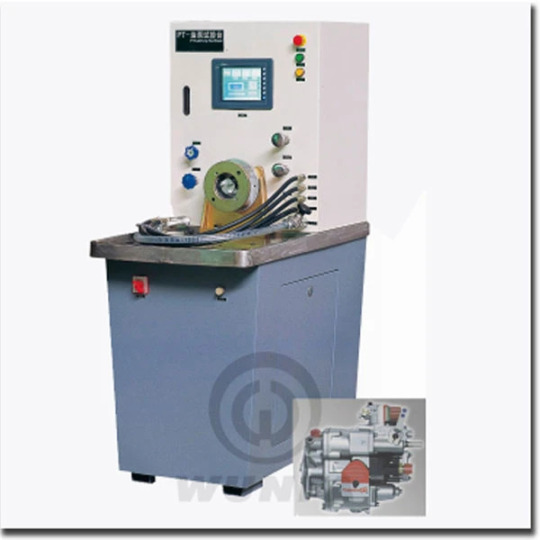
In addition to their role in product development, test benches also play a vital role in quality assurance and troubleshooting. By subjecting every component to rigorous testing before deployment, manufacturers can identify and rectify potential issues early in the production process, minimizing costly recalls and downtime for end-users.
In conclusion, the intersection of test benches and common rail technology represents a nexus of innovation in the diesel industry. These advanced testing platforms enable engineers to push the boundaries of performance, efficiency, and reliability, driving forward the evolution of diesel engines to meet the challenges of tomorrow's transportation landscape.
#rail test bench#test bench#common rail test bench#diesel engine parts manufacturer#denso valve#engine parts#diesel engine parts#pizo valve#remanufacture injector#delivery valve#bosch injector
0 notes
Text

Bosch injector
Bosch Injectors, Engineered for precision and durability, these injectors deliver efficient fuel atomization, promoting optimal combustion and overall engine performance.
#engine parts#diesel engine parts#denso valve#remanufacture injector#delivery valve#test bench#common rail test bench#diesel engine parts manufacturer#bosch injector#pizo valve
0 notes
Text

Delphi valve
Delphi Valves are engineered to meet stringent standards, these valves contribute to the efficient and reliable operation of the fuel injection system, promoting optimal engine performance.
Web:- https://www.wunfagroup.com/product/delphi-control-valve/
#Delphi valve#engine parts#diesel engine parts#common rail test bench#denso valve#diesel engine parts manufacturer#remanufacture injector#test bench
0 notes
Text
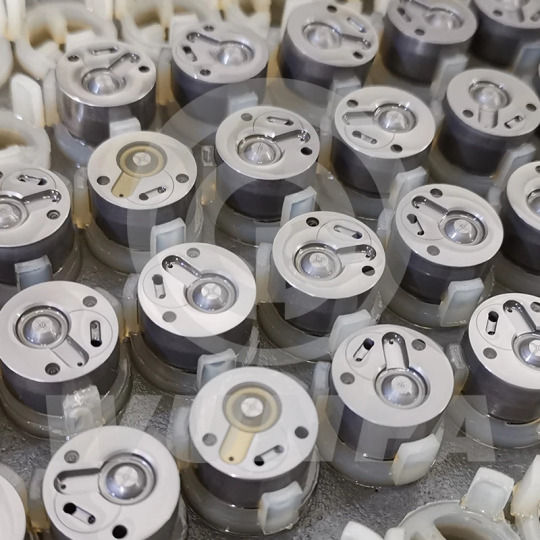
Denso valve
Denso valves help to improve the accuracy and dependability of the fuel injection system. Our Denso valves guarantee maximum performance, longevity, and efficiency while providing excellent fuel management for your car's requirements.
#Denso valve#valve#pizo valve#delivery valve#engine parts#diesel engine parts#diesel engine parts manufacturer#test bench
0 notes
Text
Maximizing Engine Potential with Delivery Valve Strategies.
In the intricate ecosystem of internal combustion engines, every component plays a crucial role in determining performance, efficiency, and reliability. Among these components, control valves and delivery valves stand out as key players in fuel injection systems, wielding significant influence over engine power and responsiveness. Let's explore how these valves work in tandem to maximize engine potential.
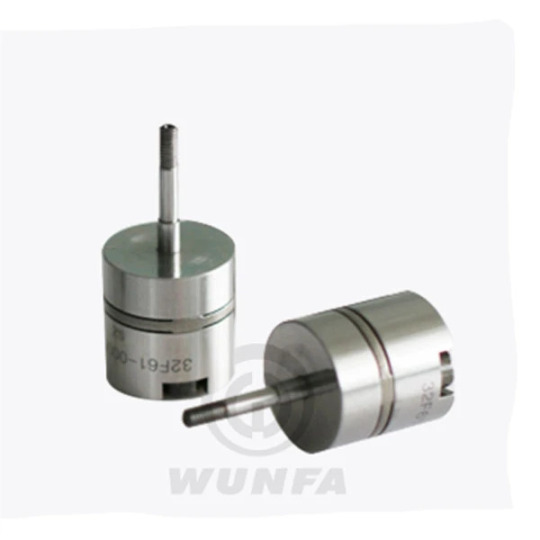
Control valves are central to the fuel injection process, regulating the flow of pressurized fuel into the combustion chamber with precision timing and metering. Positioned within the fuel injection pump, control valves control the initiation, duration, and quantity of fuel delivery, ensuring optimal combustion for various operating conditions. By adjusting fuel delivery according to engine speed, load, and throttle position, control valves optimize power output while minimizing fuel consumption and emissions.
Complementing the role of control valves are delivery valves, which play a crucial role in sealing and controlling the flow of pressurized fuel within the injection system. Located at the outlet of the injection pump, delivery valves open and close in synchronization with the engine's cycle, delivering precise amounts of fuel to each cylinder at the right moment. By maintaining proper pressure and timing, delivery valves ensure consistent fuel delivery, promoting smooth engine operation and optimal performance.

The synergy between control valves and delivery valves is paramount to achieving maximum engine potential. Through precise control of fuel delivery timing, duration, and quantity, control valves optimize combustion efficiency, resulting in increased power output and reduced fuel consumption. Meanwhile, delivery valves ensure accurate metering and distribution of fuel to each cylinder, promoting balanced engine operation and minimizing exhaust emissions.
In conclusion, the strategic coordination of control valves and delivery valves lies at the heart of engine optimization. By fine-tuning fuel injection parameters and maintaining precise control over fuel delivery, these valves unleash the full potential of internal combustion engines, balancing power, efficiency, and emissions performance. As automotive technology continues to evolve, the role of control and delivery valve strategies will remain essential in pushing the boundaries of engine performance and efficiency to new heights.
#engine parts#diesel engine parts#denso valve#diesel engine parts manufacturer#pizo valve#bosch injector#delivery valve#test bench#common rail test bench#remanufacture injector#control valve#Delivery Valve
0 notes
Text
Empowering Engines with the power of Urea Injectors
In the dynamic world of diesel engines, innovation plays a pivotal role in enhancing efficiency, reducing emissions, and maximizing performance. Among the forefront technologies driving this transformation are common rail injectors and urea injectors. Let's delve into the science behind these cutting-edge components and how they empower modern engines.

Common rail injectors are integral to diesel engines, facilitating precise fuel delivery at high pressure. Unlike traditional fuel injection systems, common rail injectors utilize a common fuel rail that supplies fuel to individual injectors. This design enables finer control over fuel atomization and injection timing, resulting in optimized combustion and enhanced engine efficiency. By delivering fuel at extremely high pressures,common rail injectors ensure thorough mixing with air, leading to cleaner combustion and reduced emissions.
Urea injectors, on the other hand, are key players in selective catalytic reduction (SCR) systems, a technology employed to mitigate nitrogen oxide (NOx) emissions. Urea, commonly known as AdBlue or Diesel Exhaust Fluid (DEF), is injected into the exhaust stream where it reacts with NOx to form harmless nitrogen and water vapor. Urea injectors precisely meter the urea solution into the exhaust system, ensuring efficient conversion of harmful emissions without compromising engine performance.

The synergy between common rail and urea injectors exemplifies the marriage of precision engineering and environmental responsibility. Common rail injectors optimize fuel delivery, enhancing power output while minimizing fuel consumption and emissions. Meanwhile, urea injectors play a crucial role in reducing harmful pollutants, ensuring compliance with stringent emissions regulations without sacrificing engine performance.
In conclusion, the science behind common rail and urea injectors represents a paradigm shift in diesel engine technology. By harnessing the power of precision fuel delivery and emissions control, these components empower engines to achieve new levels of efficiency, performance, and environmental sustainability. As diesel continues to evolve, common rail and urea injectors will undoubtedly remain at the forefront of innovation, driving the industry towards a cleaner and more efficient future.
#engine parts#common rail test bench#denso valve#diesel engine parts#diesel engine parts manufacturer#pizo valve#remanufacture injector#bosch injector#test bench#Urea injector#Common rail injector
0 notes
Text
Understanding the Role of Unit Injectors in a Diesel Engine
Diesel engines have long been the powerhouse of industries, transportation, and heavy-duty machinery. At the heart of these engines lie crucial components known as injectors, which play a vital role in the combustion process. In recent years, the terms "remanufacture injector" and "unit injector" have gained prominence, but what exactly do they entail?
Remanufacture injectors are essentially refurbished injectors that undergo a meticulous process to restore them to their original specifications. These injectors are disassembled, cleaned, and inspected for wear and tear. Any faulty components are replaced, and the injector is reassembled to meet or exceed OEM standards. The result? A high-quality injector that performs like new but at a fraction of the cost.

On the other hand, unit injectors, as the name suggests, combine the functions of both the injector and the fuel pump into a single unit. This integration allows for more precise control over fuel delivery, resulting in improved engine performance and fuel efficiency. Unit injectors are commonly found in modern diesel engines, particularly in high-performance vehicles and heavy-duty trucks.
Understanding the role of remanufacture andunit injectors is crucial for diesel engine owners and operators. These components directly impact fuel efficiency, emissions, and overall engine performance. By opting for remanufactured injectors, individuals can prolong the lifespan of their engines while reducing costs. Similarly, upgrading to unit injectors can lead to significant improvements in power output and fuel economy.
Moreover, both remanufacture and unit injectors contribute to sustainability efforts by reducing the need for new manufacturing and minimizing waste. By refurbishing existing components, manufacturers and consumers alike can lessen their environmental footprint without compromising on quality or performance.

In conclusion, demystifying diesel and understanding the role of remanufacture and unit injectors are essential steps towards optimizing engine efficiency and prolonging the lifespan of diesel engines. Whether it's through refurbishing existing injectors or upgrading to unit injectors, embracing these technologies is key to unlocking the full potential of diesel power.
#diesel engine parts#engine parts#common rail test bench#denso valve#diesel engine parts manufacturer#remanufacture injector#test bench#bosch injector#pizo valve#delivery valve#Unit injector
0 notes
Text

SCV valve
Optimize fuel pressure regulation with our SCV Valves. As a crucial component in the common rail system, these valves ensure precise control, contributing to improved fuel efficiency and reduced emissions.
#engine parts#diesel engine parts#common rail test bench#pizo valve#remanufacture injector#bosch injector#delivery valve#diesel engine parts manufacturer#test bench#denso valve#SCV valve
0 notes
Text
Demystifying the Heartbeat of Modern Diesels: Common Rail Injectors and Test Benches
The symphony of a modern diesel engine relies on a delicate dance of precisely controlled fuel injection. At the center of this choreography stands the common rail injector, a marvel of precision engineering that delivers fuel with unmatched efficiency and power. But how does this tiny device work, and how do we ensure it's performing at its peak? Enter the common rail test bench, a diagnostic tool that keeps the diesel heart beating strong.
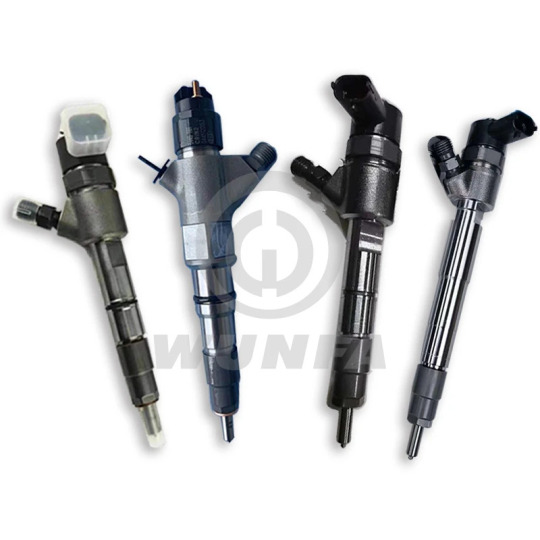
Under the Hood: The Magic of Common Rail Injectors
Imagine a single fuel rail, pressurized to thousands of pounds per square inch, feeding multiple injectors. That's the essence of common rail technology. Unlike older systems with individual pumps for each injector, common rail delivers a constant, high-pressure fuel supply, allowing for:
More precise injection timing and control: This translates to better fuel economy, lower emissions, and smoother engine operation.
Multiple injection events per cycle: This enables more efficient combustion, leading to increased power and torque.
Adaptability to different engine conditions: Common rail injectors can adjust injection parameters on-the-fly, optimizing performance across various loads and speeds.
The Power of Diagnosis: The Common Rail Test Bench
Just like any intricate machine, common rail injectors need regular checkups. This is where the common rail test bench comes in. This specialized equipment acts as a diagnostic powerhouse, simulating real-world engine conditions and evaluating injector performance through a series of tests:

Leakage test: Ensures the injector isn't allowing fuel to escape when closed, preventing pressure loss and potential damage.
Injection quantity and pattern test: Measures the amount of fuel delivered per injection and its spray pattern, ensuring optimal combustion and minimizing emissions.
Response time test: Evaluates how quickly the injector opens and closes in response to electrical signals, crucial for precise fuel delivery.
Benefits of Regular Testing:
Improved engine performance: Early detection and repair of injector issues prevent power loss, increased fuel consumption, and harmful emissions.
Reduced maintenance costs: Catching problems early can save you from expensive repairs down the line.
Extended injector lifespan: Proper maintenance and timely replacement ensure your injectors operate optimally for longer.
In Conclusion:
Common rail injectors are the silent heroes of modern diesel engines, ensuring efficient, powerful, and clean operation. By understanding their functionality and the importance of regular testing with common rail test benches, you can keep your diesel engine running smoothly and efficiently for miles to come. So, the next time you hear the purr of a diesel engine, remember the tiny maestro at its heart and the diagnostic tools that keep it in perfect tune!
#diesel engine parts#engine parts#denso valve#diesel engine parts manufacturer#common rail test bench#remanufacture injector#Common rail injector#Common rail test bench
0 notes
Text
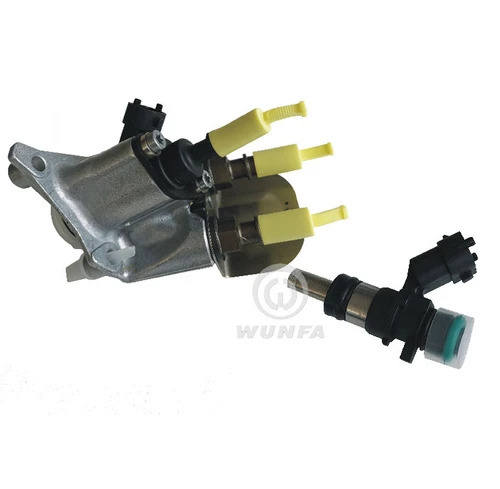
Urea injector
Upgrade your vehicle's emission control with our Urea Injectors. Engineered for efficient selective catalytic reduction (SCR), these injectors ensure optimal utilization of urea for reduced emissions and enhanced environmental compliance.
#engine parts#diesel engine parts#diesel engine parts manufacturer#bosch injector#delivery valve#common rail test bench#remanufacture injector#test bench#denso valve#pizo valve#Urea injector
0 notes
Text
Ensuring Performance: The Crucial Role of Fuel Pump Test Benches
The heart of any internal combustion engine, be it a powerful car or a workhorse tractor, relies on a vital component: the fuel pump. This unsung hero ensures the precise delivery of fuel, directly impacting engine performance, efficiency, and emissions. But how do we guarantee its optimal operation? Enter the fuel pump test bench, a specialized piece of equipment that plays a critical role in maintaining top engine health.
What is a Fuel Pump Test Bench?
Imagine a platform designed to replicate the real-world demands placed on a fuel pump. That's essentially what a fuel pump test bench is. It allows technicians and manufacturers to simulate various operating conditions, such as engine speed, fuel pressure, and temperature. By mimicking these conditions, the bench can accurately evaluate the pump's performance, identify potential issues, and ensure it meets specific standards.

What Does a Fuel Pump Test Bench Do?
These versatile machines offer a range of functionalities:
Performance Measurement: They measure critical parameters like flow rate, pressure, delivery volume, and injection timing. Deviations from specifications indicate potential problems that need attention.
Calibration and Adjustment: Many benches allow fine-tuning of the pump's performance to bring it back within optimal operating range, ensuring efficient fuel delivery.
Durability Testing: By simulating extreme conditions like high pressure and temperature, benches can assess the pump's long-term reliability and identify potential weaknesses.
Research and Development: Manufacturers utilize benches to design, test, and improve new fuel pump technologies, pushing the boundaries of efficiency and performance.
Benefits of Using a Fuel Pump Test Bench:
Improved Engine Performance: Accurate fuel delivery optimizes combustion, leading to better power, fuel economy, and lower emissions.
Reduced Downtime: Early detection and diagnosis of pump issues prevent breakdowns and costly repairs, keeping engines running smoothly.
Enhanced Safety: Ensuring proper fuel pressure and flow minimizes the risk of engine fires and other safety hazards.
Quality Assurance: Manufacturers can guarantee the performance and reliability of their pumps before they reach the market.
Types of Fuel Pump Test Benches:
Different types of benches cater to specific needs:
Mechanical benches: These traditional setups physically drive the pump using motors and gears.
Electronic benches: Modern versions utilize computer controls and advanced sensors for precise testing and data analysis.
Flow benches: These benches focus on measuring the fuel flow rate and identifying inconsistencies.
Combination benches: Some offer a combination of functionalities for comprehensive testing.

The Future of Fuel Pump Test Benches:
As engine technology evolves, so too will test benches. We can expect advancements in automation, data analysis, and simulation capabilities, leading to even more efficient, accurate, and comprehensive testing solutions.
Conclusion:
Fuel pump test bench play a critical role in ensuring optimal engine performance, reliability, and safety. By simulating real-world conditions and analyzing key parameters, these versatile tools empower technicians and manufacturers to keep engines running smoothly and efficiently. As technology progresses, fuel pump test benches will continue to be essential tools in the pursuit of cleaner, more efficient, and powerful engines.
#Fuel pump test bench#test bench#engine parts#diesel engine parts#pizo valve#delivery valve#denso valve#diesel engine parts manufacturer#remanufacture injector
0 notes